Speakers
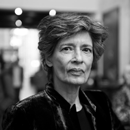 Parveen Adams is known for her work in the field of psychoanalysis and feminism, on the journal m/f (1978-86), [selected papers in The Woman in Question (1990)]. Since then she has focused on the use of psychoanalysis in the analysis of art. She guest edited a Special Issue ‘Rendering the Real’ for October (1992). Her books include The Emptiness of the Image (1996) and Art: Sublimation or Symptom (2003). She has published extensively on Cronenberg’s Crash (2000-2005). Her work on Thomas Demand has been published in Grey Room (2006) and ‘Art and the time of Repetition’ by the Generali Foundation in Vienna (2007). A part of ‘Hanged, Drawn and Quartered’, a consideration of Jake and Dinos Chapman and their relation to Goya, appeared in Savoir et Clinique (no 10, 2009) and the full version is to be published shortly by Liverpool University Press. Parveen is working with the Lacanian idea of the body, currently in an analysis of David Lynch’s Inland Empire. She is on the Board of the Journal of Lacanian Studies and Savoir et Clinique.
Parveen Adams is known for her work in the field of psychoanalysis and feminism, on the journal m/f (1978-86), [selected papers in The Woman in Question (1990)]. Since then she has focused on the use of psychoanalysis in the analysis of art. She guest edited a Special Issue ‘Rendering the Real’ for October (1992). Her books include The Emptiness of the Image (1996) and Art: Sublimation or Symptom (2003). She has published extensively on Cronenberg’s Crash (2000-2005). Her work on Thomas Demand has been published in Grey Room (2006) and ‘Art and the time of Repetition’ by the Generali Foundation in Vienna (2007). A part of ‘Hanged, Drawn and Quartered’, a consideration of Jake and Dinos Chapman and their relation to Goya, appeared in Savoir et Clinique (no 10, 2009) and the full version is to be published shortly by Liverpool University Press. Parveen is working with the Lacanian idea of the body, currently in an analysis of David Lynch’s Inland Empire. She is on the Board of the Journal of Lacanian Studies and Savoir et Clinique.
Presentation: Sticking to the Plot of David Lynch’s Inland Empire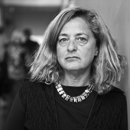 Giuliana Bruno, Ph.D. is Professor of Visual and Environmental Studies at Harvard University. She is known for her research on the intersections of architecture, the visual arts and film. Bruno lectures and has published numerous books and articles internationally, including her latest Public Intimacy: Architecture and the Visual Arts (MIT Press, 2007). For Streetwalking on a Ruined Map (Princeton University Press, 1995), she won the Society for Cinema and Media Studies award for best book in film studies. Her seminal book Atlas of Emotion: Journeys in Art, Architecture, and Film (Verso, 2002) won the 2004 Kraszna-Krausz Book Award for "the world's best book on the moving image" and was named a Book of the Year in 2003 by the Guardian. She is featured in Visual Culture Studies: Interviews with Key Thinkers as one of the most influential intellectuals working today in visual studies (Sage, 2008).
Giuliana Bruno, Ph.D. is Professor of Visual and Environmental Studies at Harvard University. She is known for her research on the intersections of architecture, the visual arts and film. Bruno lectures and has published numerous books and articles internationally, including her latest Public Intimacy: Architecture and the Visual Arts (MIT Press, 2007). For Streetwalking on a Ruined Map (Princeton University Press, 1995), she won the Society for Cinema and Media Studies award for best book in film studies. Her seminal book Atlas of Emotion: Journeys in Art, Architecture, and Film (Verso, 2002) won the 2004 Kraszna-Krausz Book Award for "the world's best book on the moving image" and was named a Book of the Year in 2003 by the Guardian. She is featured in Visual Culture Studies: Interviews with Key Thinkers as one of the most influential intellectuals working today in visual studies (Sage, 2008).
Presentation: Fabrics of Light: Architecture and Cinema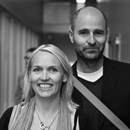 Bull.Miletic are Synne Bull and Dragan Miletic who live and work together in Oslo, Norway. Central to their artistic practice is the question of how moving images form conceptions of space and influence our visual perception of reality. Their videos portray cities, architecture and landscape as containers of emotions, memories, and political decisions. Bull.Miletic have shown internationally at venues including the 2006 California Biennial, Henie Onstad kunstsenter, Høvikodden, German Architecture Museum, Frankfurt, Künstlerhaus Bethanien, Berlin, Pasadena Museum of California Art, Victorian Arts Center, Melbourne, Pacific Film Archive, Berkeley, MoCA the Geffen Contemorary, Los Angeles, Ulrich Museum of Art, Wichita and Museum of Contemporary Art Belgrade. Synne Bull is currently Associate Professor of Film & Video at the Oslo Academy of Fine Art.
Bull.Miletic are Synne Bull and Dragan Miletic who live and work together in Oslo, Norway. Central to their artistic practice is the question of how moving images form conceptions of space and influence our visual perception of reality. Their videos portray cities, architecture and landscape as containers of emotions, memories, and political decisions. Bull.Miletic have shown internationally at venues including the 2006 California Biennial, Henie Onstad kunstsenter, Høvikodden, German Architecture Museum, Frankfurt, Künstlerhaus Bethanien, Berlin, Pasadena Museum of California Art, Victorian Arts Center, Melbourne, Pacific Film Archive, Berkeley, MoCA the Geffen Contemorary, Los Angeles, Ulrich Museum of Art, Wichita and Museum of Contemporary Art Belgrade. Synne Bull is currently Associate Professor of Film & Video at the Oslo Academy of Fine Art.
Presentation: Heaven Can Wait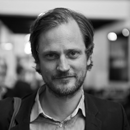 Andreas Bunte’s 16mm films probe the history of ideas and previous chapters of Western culture, with a particular view on modernity and the changes wrought on society by technological progress. "The footage becomes a patchwork of moving images and its incongruous articulation disrupts the authenticity usually ascribed to film. The image is not so much a chronology of events recorded in duration as a collage: a fiction stitched together from disparate realities loosened from their anchorage in space and time." (Si Non Rogas Intelligo, Michelle Cotton, 2009).
Bunte had several exhibitions in 2009, including a solo exhibition at the Kunstverein Bielefeld, Germany, and the group exhibitions Report on Probability, Kunsthalle Basel, Basel (curated by Adam Szymczyk) and Contour, 4th biennial of moving image, Mechelen, Belgium (curated by Katerina Gregos).
Andreas Bunte’s 16mm films probe the history of ideas and previous chapters of Western culture, with a particular view on modernity and the changes wrought on society by technological progress. "The footage becomes a patchwork of moving images and its incongruous articulation disrupts the authenticity usually ascribed to film. The image is not so much a chronology of events recorded in duration as a collage: a fiction stitched together from disparate realities loosened from their anchorage in space and time." (Si Non Rogas Intelligo, Michelle Cotton, 2009).
Bunte had several exhibitions in 2009, including a solo exhibition at the Kunstverein Bielefeld, Germany, and the group exhibitions Report on Probability, Kunsthalle Basel, Basel (curated by Adam Szymczyk) and Contour, 4th biennial of moving image, Mechelen, Belgium (curated by Katerina Gregos).
Presentation: Artificial Paradises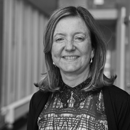 Beatriz Colomina, Ph.D. is Professor of Architecture and Founding Director of the Program in Media and Modernity at Princeton University. She is an internationally renowned architectural historian and theorist who has written extensively on questions of architecture and media. Her books include Privacy and Publicity: Modern Architecture as Mass Media (Cambridge: The MIT Press, 1994), which was awarded the 1995 International Book Award by the American Institute of Architects and is translated in many languages, Sexuality and Space (New York: Princeton Architectural Press, 1992), which was awarded the 1993 International Book Award by the American Institute of Architects and Architectureproduction (New York: Princeton Architectural Press, 1988). Her latest book is Domesticity at War (Barcelona: ACTAR and MIT Press, 2007). [Recently she curated the exhibition “Clip/Stamp/Fold: The Radical Architecture of Little Magazines 196X-197X” at the Storefront for Art and Architecture in New York and the CCA in Montreal. The exhibition traveled to Documenta 12 and the Architectural Association in London, Norsk Form (Norwegian Centre for Design and Architecture) in Oslo, the Contemporary Art gallery in Vancouver, the Disseny Hub Barcelona, the Colegio de Arquitectos de Murcia and it is currently in the NAiM/Bureau Europe in Maastricht. Her current research project is "X-Ray Architecture: Illness as Metaphor."
Beatriz Colomina, Ph.D. is Professor of Architecture and Founding Director of the Program in Media and Modernity at Princeton University. She is an internationally renowned architectural historian and theorist who has written extensively on questions of architecture and media. Her books include Privacy and Publicity: Modern Architecture as Mass Media (Cambridge: The MIT Press, 1994), which was awarded the 1995 International Book Award by the American Institute of Architects and is translated in many languages, Sexuality and Space (New York: Princeton Architectural Press, 1992), which was awarded the 1993 International Book Award by the American Institute of Architects and Architectureproduction (New York: Princeton Architectural Press, 1988). Her latest book is Domesticity at War (Barcelona: ACTAR and MIT Press, 2007). [Recently she curated the exhibition “Clip/Stamp/Fold: The Radical Architecture of Little Magazines 196X-197X” at the Storefront for Art and Architecture in New York and the CCA in Montreal. The exhibition traveled to Documenta 12 and the Architectural Association in London, Norsk Form (Norwegian Centre for Design and Architecture) in Oslo, the Contemporary Art gallery in Vancouver, the Disseny Hub Barcelona, the Colegio de Arquitectos de Murcia and it is currently in the NAiM/Bureau Europe in Maastricht. Her current research project is "X-Ray Architecture: Illness as Metaphor."
Presentation: Enclosed by Images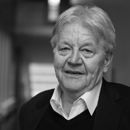 Mark Cousins is Director of Histories and Theory at the Architectural Association. He has been Visiting Professor of Architecture at Columbia University and at the Architecture School of the University of Navarre. He is a Founder member and Senior Fellow at the London Consortium. He has been a member of the Arts Council and consultant to the practice of Zaha Hadid. He has written on the relation of the human sciences and psychoanalysis. His publications include a book on Michel Foucault (with Athar Hussain), the Introduction to a new translation of a selection of Freud’s papers on The Unconscious in a series edited by Adam Phillips and a series of articles on ‘The Ugly’ in AA Files has been translated into many languages. He has published on the work of Tony Fretton and on many artists, most recently catalogue essays for Cerith Wynn-Evans, Anthony Gormley, Jane and Louise Wilson and Donovan Wylie. He has contributed to many journals including Harvard Design Magazine, m/f, October, Economy and Society, and Art History. He is known for his Friday Afternoon Lectures at the Architectural Association, which have drawn artists, architects and Consortium students (more recently) for nearly twenty-five years.
Mark Cousins is Director of Histories and Theory at the Architectural Association. He has been Visiting Professor of Architecture at Columbia University and at the Architecture School of the University of Navarre. He is a Founder member and Senior Fellow at the London Consortium. He has been a member of the Arts Council and consultant to the practice of Zaha Hadid. He has written on the relation of the human sciences and psychoanalysis. His publications include a book on Michel Foucault (with Athar Hussain), the Introduction to a new translation of a selection of Freud’s papers on The Unconscious in a series edited by Adam Phillips and a series of articles on ‘The Ugly’ in AA Files has been translated into many languages. He has published on the work of Tony Fretton and on many artists, most recently catalogue essays for Cerith Wynn-Evans, Anthony Gormley, Jane and Louise Wilson and Donovan Wylie. He has contributed to many journals including Harvard Design Magazine, m/f, October, Economy and Society, and Art History. He is known for his Friday Afternoon Lectures at the Architectural Association, which have drawn artists, architects and Consortium students (more recently) for nearly twenty-five years.
Presentation: The Place of Location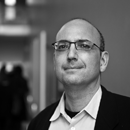 Edward Dimendberg, Ph.D. is a publishing consultant and Professor of Film and Media Studies, Visual Studies, and German at the University of California, Irvine. He has received grants and fellowships from the Graham Foundation, the American Academy in Berlin, the Canadian Centre for Architecture, and the German Fulbright Commission. From 2005 to 2008 he served as the founding Multimedia Editor of the Journal of the Society of Architectural Historians, and he remains a frequent lecturer at schools of architecture, museums, cinema studies programs, and film festivals. His book Film Noir and the Spaces of Modernity is a key contribution to scholarship on cinema and the city in the 1940s and 1950s. In 2011 the University of Chicago Press published his monograph Diller Scofidio + Renfro: Architecture After Images.
Edward Dimendberg, Ph.D. is a publishing consultant and Professor of Film and Media Studies, Visual Studies, and German at the University of California, Irvine. He has received grants and fellowships from the Graham Foundation, the American Academy in Berlin, the Canadian Centre for Architecture, and the German Fulbright Commission. From 2005 to 2008 he served as the founding Multimedia Editor of the Journal of the Society of Architectural Historians, and he remains a frequent lecturer at schools of architecture, museums, cinema studies programs, and film festivals. His book Film Noir and the Spaces of Modernity is a key contribution to scholarship on cinema and the city in the 1940s and 1950s. In 2011 the University of Chicago Press published his monograph Diller Scofidio + Renfro: Architecture After Images.
Presentation: The Persistence of the Cinematic in Contemporary Media Architecture: The Case of Diller Scofidio + Renfro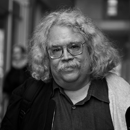 Tom Gunning, Ph.D. is professor, Department of Art History, Department of Cinema & Media Studies, and the College, Chair, Department of Cinema & Media Studies at The University of Chicago. Tom Gunning is the Edwin A. and Betty L. Bergman Distinguished Service Professor. Gunning works on problems of film style and interpretation, film history and film culture. His published work (approximately one hundred publications) has concentrated on early cinema (from its origins to the WW I) as well as on the culture of modernity from which cinema arose. His concept of the "cinema of attractions" has tried to relate the development of cinema to other forces than storytelling, such as new experiences of space and time in modernity, and an emerging modern visual culture.
Tom Gunning, Ph.D. is professor, Department of Art History, Department of Cinema & Media Studies, and the College, Chair, Department of Cinema & Media Studies at The University of Chicago. Tom Gunning is the Edwin A. and Betty L. Bergman Distinguished Service Professor. Gunning works on problems of film style and interpretation, film history and film culture. His published work (approximately one hundred publications) has concentrated on early cinema (from its origins to the WW I) as well as on the culture of modernity from which cinema arose. His concept of the "cinema of attractions" has tried to relate the development of cinema to other forces than storytelling, such as new experiences of space and time in modernity, and an emerging modern visual culture.
Presentation: One-Way street: The urban chronotype of the street and its logic in cinema Henrik Gustafsson is a film scholar and post–doc fellow with the Nomadikon Research Group at the Department of Information Science and Media Studies, University of Bergen. Gustafsson earned his doctorate from Cinema Studies, Stockholm University in the spring of 2007. He has given courses on film history, genre and documentary film and published the book Out of Site: Landscape and Cultural Reflexivity in New Hollywood Cinema, 1969-1974 (Saarbrücken: VDM Verlag Dr. Müller, 2008). Presently, he is working on a project titled “Ruin and Resurrection: the Afterlife of Landscape” which draws from various sources of fiction- and non-fiction film, installation art and photography. Departing from discourses about the unrepresentability of the Holocaust, the study revolves around the discrepancy between what we see and what we imagine, with special regard to site-specificity, memory work and geopolitics.
Henrik Gustafsson is a film scholar and post–doc fellow with the Nomadikon Research Group at the Department of Information Science and Media Studies, University of Bergen. Gustafsson earned his doctorate from Cinema Studies, Stockholm University in the spring of 2007. He has given courses on film history, genre and documentary film and published the book Out of Site: Landscape and Cultural Reflexivity in New Hollywood Cinema, 1969-1974 (Saarbrücken: VDM Verlag Dr. Müller, 2008). Presently, he is working on a project titled “Ruin and Resurrection: the Afterlife of Landscape” which draws from various sources of fiction- and non-fiction film, installation art and photography. Departing from discourses about the unrepresentability of the Holocaust, the study revolves around the discrepancy between what we see and what we imagine, with special regard to site-specificity, memory work and geopolitics.
Presentation: Postmodern Travelogues: Keiller, Lanzmann & Ackermann Marit Paasche is Associate Professor of Art Theory at the Oslo Academy of Fine Art. She also works as a freelance art critic, curator and writer. Her field of specialty is contemporary art, with a particular focus on video art and experimental film by artists like Stan Brakhage, Hollis Frampton, Hito Steyerl and Rosalind Nashashibi. She has been an editor of several books, including An Eye For Time. Video Art and Reality (Pax, 2004). Currently, she is working on a compilation of essays discussing the relationship between film and visual arts entitled How Cinema Got a Hold on Art: A Cinematic Approach, which is due to be published in 2011.
Marit Paasche is Associate Professor of Art Theory at the Oslo Academy of Fine Art. She also works as a freelance art critic, curator and writer. Her field of specialty is contemporary art, with a particular focus on video art and experimental film by artists like Stan Brakhage, Hollis Frampton, Hito Steyerl and Rosalind Nashashibi. She has been an editor of several books, including An Eye For Time. Video Art and Reality (Pax, 2004). Currently, she is working on a compilation of essays discussing the relationship between film and visual arts entitled How Cinema Got a Hold on Art: A Cinematic Approach, which is due to be published in 2011.
Presentation: The New Protagonist. A Few Remarks on the Films of Hito Steyerl Judy Radul lives and works in Vancouver. Her interdisciplinary practice embraces photography, sculpture, performance, video and mixed media installations. She has exhibited her work internationally including Mechelen (Belgium), Museum van Hedendaagse Kunst (Antwerp), Catriona Jeffries Gallery (Vancouver), Oboro (Montreal), Presentation House Gallery (North Vancouver), and The Power Plant (Toronto). Radul is Chair of the graduate program at the School for the Contemporary Arts, Simon Fraser University and her creative writing and essays on theatre, performance art and visual art have appeared in a variety of publications since 1991. Her latest and most ambitious work is called World Rehearsal Court, a large-scale media installation. This work draws on Radul’s research into the role of theatricality and new technologies in the court of law and it questions the distinctions between experience, testimony, truth, and fiction that the law attempts to make distinct.
Judy Radul lives and works in Vancouver. Her interdisciplinary practice embraces photography, sculpture, performance, video and mixed media installations. She has exhibited her work internationally including Mechelen (Belgium), Museum van Hedendaagse Kunst (Antwerp), Catriona Jeffries Gallery (Vancouver), Oboro (Montreal), Presentation House Gallery (North Vancouver), and The Power Plant (Toronto). Radul is Chair of the graduate program at the School for the Contemporary Arts, Simon Fraser University and her creative writing and essays on theatre, performance art and visual art have appeared in a variety of publications since 1991. Her latest and most ambitious work is called World Rehearsal Court, a large-scale media installation. This work draws on Radul’s research into the role of theatricality and new technologies in the court of law and it questions the distinctions between experience, testimony, truth, and fiction that the law attempts to make distinct.
Presentation: World Rehearsal Court
Moderator
 Mattias Ekman, AA Dipl is Ph.D. student and research fellow at the Institute of Form, Theory and History, The Oslo School of Architecture and Design. His dissertation investigates the built environment as a device for the collective and cultural memory. In the cases, which include Norway’s National Gallery as a framework for the retrieval of personal and professional memory and the loss of space in war and diaspora, Ekman asks to what extent architecture conditions remembrance. As a research-by-design project it makes use of video as an alternative discursive medium in academia. Ekman has previously worked for internationally acclaimed Norwegian architecture offices.
Mattias Ekman, AA Dipl is Ph.D. student and research fellow at the Institute of Form, Theory and History, The Oslo School of Architecture and Design. His dissertation investigates the built environment as a device for the collective and cultural memory. In the cases, which include Norway’s National Gallery as a framework for the retrieval of personal and professional memory and the loss of space in war and diaspora, Ekman asks to what extent architecture conditions remembrance. As a research-by-design project it makes use of video as an alternative discursive medium in academia. Ekman has previously worked for internationally acclaimed Norwegian architecture offices.